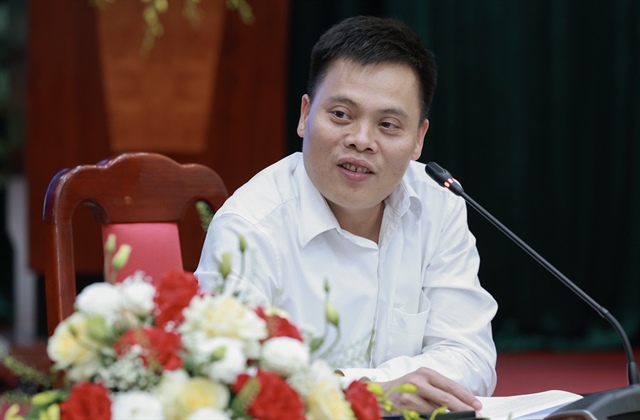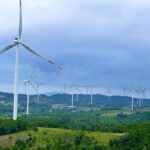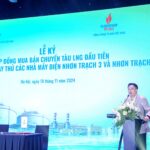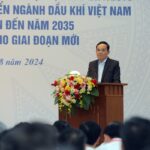Renewable Energy Development is Stalling
At the seminar “Energy Transition Solutions towards Net Zero” hosted by the Labor Newspaper on May 29, Assoc. Prof. Dr. Dang Tran Tho, Director of the Institute of Energy Technology, emphasized the pivotal role of energy in socio-economic development, serving as the “engine” for all industries, services, and civilian livelihoods.
In recent years, Vietnam has made significant strides in the energy sector, particularly in renewable energy (RE). The period between 2018 and 2020 witnessed a boom in solar power, with over 16.5 GW of capacity added. Consequently, Vietnam became the leading ASEAN country in solar power capacity, surpassing Thailand.
Wind power also reached approximately 4.3 GW by the end of 2023, with most developments concentrated in Ninh Thuan, Binh Thuan, and the Central Highlands provinces.
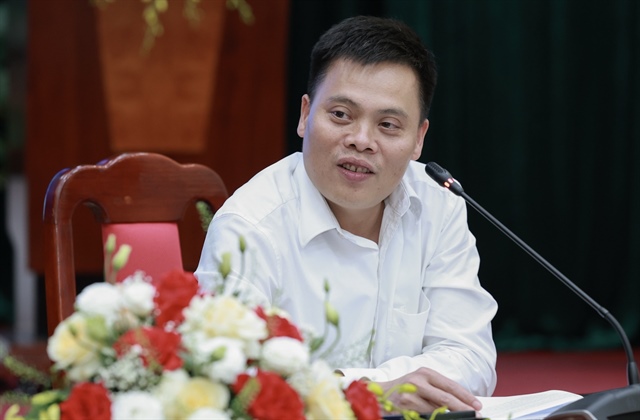
Assoc. Prof. Dr. Dang Tran Tho, Director of the Institute of Energy Technology. Photo: Hai Nguyen |
However, since 2021, the development of RE has noticeably stalled due to the conclusion of the feed-in tariff (FIT) support policy without a timely replacement mechanism. More than 4,000 MW of solar and wind power projects have been completed but remain without power purchase agreements (PPAs) or face frequent output curtailment due to transmission grid constraints.
The lack of a transitional electricity pricing policy has led to the stagnation of dozens of GW of capacity from new projects, resulting in significant social resource wastage.
According to Mr. Tho, the transition from the FIT mechanism to auctions or PPA with a ceiling price lacks clarity regarding price determination methods, risk-sharing mechanisms, and implementation timelines.
Concurrently, existing PPAs lack strong legal enforceability, and the absence of payment guarantee or risk-sharing mechanisms for infrastructure, policies, and regulations hinders the participation of international financial institutions in long-term investments. Consequently, capital mobilization for green energy projects in Vietnam faces multiple barriers, with banks reluctant to lend to RE projects.
Urgent Need for a Renewable Energy Law
Given this situation, the Director of the Institute of Energy Technology proposed the urgent enactment of a renewable energy law. This law should comprehensively address the scope of RE types, investor rights and obligations, permitting, grid connection, and storage procedures. It should also include a legally binding PPA template, provisions for ancillary service payments, and risk-sharing mechanisms.
Mr. Tho suggested that the law should be designed in line with international trends and developed through consultations with prominent business entities and financial institutions to ensure its feasibility and investment appeal.
Mr. Doan Ngoc Duong, Deputy Director of the Electricity Department (Ministry of Industry and Trade), shared that as of December 2024, Vietnam’s total installed capacity of renewable and clean energy sources reached 29,180 MW, accounting for approximately 33.6% of the total system capacity.
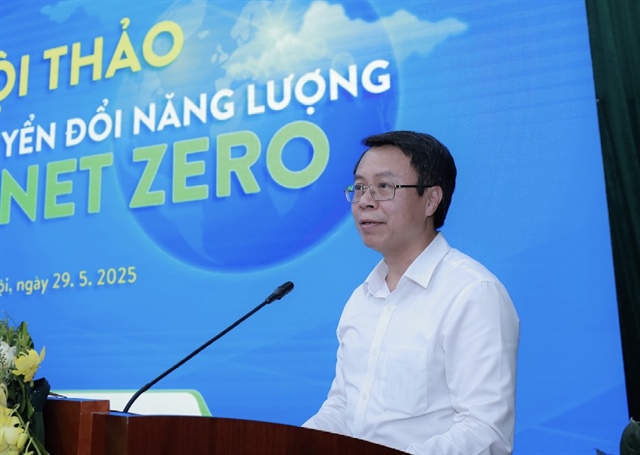 Mr. Doan Ngoc Duong, Deputy Director of the Electricity Department. Photo: Hai Nguyen |
To achieve the growth targets for RE sources as outlined in the adjusted Power Development Plan VIII and to work towards Net Zero by 2050, Mr. Duong emphasized the need to create a conducive and transparent investment environment, eliminating procedural barriers in power development investments.
The Electricity Law No. 61, which came into effect on February 1, 2025, and its implementing legal documents have largely addressed the bottlenecks related to investment procedures for power projects, publicizing planning and investment project lists, and introducing incentive mechanisms for RE and clean energy projects, especially rooftop solar, offshore wind, energy storage, and green hydrogen models.
However, Mr. Duong acknowledged the need to further refine the legal framework to make it more cohesive, flexible, and effective. He emphasized the importance of enhancing policies to encourage the production and utilization of RE and new energy sources to attract substantial investment from domestic and foreign investors in power development projects.
The Deputy Director of the Electricity Department also recognized that energy transition cannot be achieved without a smart and flexible electricity grid system. According to Decision No. 768, the investment demand for the transmission grid during the 2026-2030 period is estimated at 18.1 billion USD, taking into account grid infrastructure to evacuate power, connect regions and remote areas, and adopt modern technologies…
Therefore, it is imperative to expedite investment in strategic transmission lines and modernize the electricity grid with digital and smart technologies to optimize the utilization of RE and new energy sources nationwide.
Additionally, considering the long-term role of nuclear power, Mr. Duong assessed it as a stable and carbon-dioxide-free energy source that could serve as a baseload for the power system with a large proportion of RE sources. Vietnam has continued to implement the policy of investing in Ninh Thuan 1 and 2 nuclear power plants, based on research and cooperation with partners possessing modern, safe, and reliable technology.
Mr. Duong underscored the necessity for a contemporary mechanism, policy framework, and electricity market in Vietnam. Hence, there is an urgent need to finalize the competitive electricity market, establish a carbon credit system, implement emissions pricing, promote green finance, and foster public-private partnerships.
Tam An
– 06:00 30/05/2025
Deploy Synchronized Solutions to Achieve Renewable Energy Growth as per the Power Development Plan VIII
The transition to green energy is a challenging journey that demands a collective vision and commitment from governments, businesses, citizens, and the global community. It requires a unified effort to pave the way for a sustainable future, where we can harness the power of renewable sources and secure a cleaner, greener tomorrow. This journey is not without its obstacles, but with dedication and collaboration, we can overcome these hurdles and forge a path toward a brighter, more sustainable world.
A New Name, A New Vision: Petrovietnam’s Strategic Pivot in the Energy Evolution
“The renaming of the Vietnam Oil and Gas Group to the Vietnam National Industry-Energy Group marks a strategic turning point, reflecting ambitious aspirations but also posing significant challenges in the journey of transformation. This evolution in development model signals a pivotal moment for the organization, as aptly noted by Mr. Le Tho Binh, Vice President of the Vietnam Digital Communications Association.”
The Energy Evolution: Unlocking Oil & Gas Sector’s Competitive Advantage
The energy landscape is evolving, and the oil and gas industry must adapt to stay ahead. As the world embraces the transition to cleaner energy sources, there lies untapped potential and advantages for the sector to explore. Deputy Prime Minister and Head of the Central Economic Commission, Tran Luu Quang, emphasizes the need for the industry to seize this opportunity and focus on harnessing its capabilities to develop renewable and alternative energy sources.

